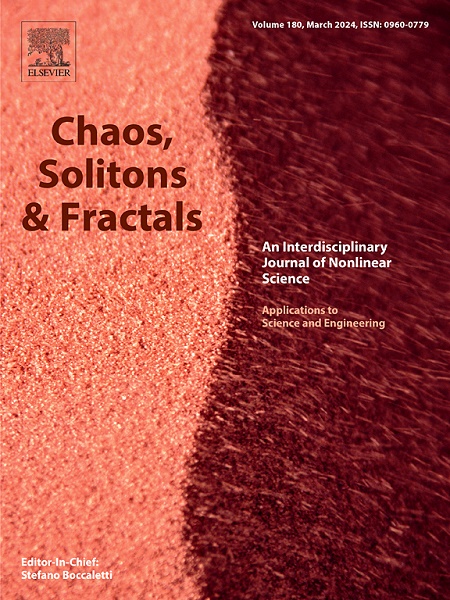The effect of communication delay and environmental uncertainties on the evolution of love model
IF 5.3
1区 数学
Q1 MATHEMATICS, INTERDISCIPLINARY APPLICATIONS
引用次数: 0
Abstract
This paper aims to study the effect of communication delay(the time of the first exchange in which the conflict occurred) and stochastic disturbance on human emotional relationship based on love model. It is characterized by nonlinear stochastic delay differential equations. The delay term and the random term represent the communication interval between two people and the uncertainty of the environment, respectively. Firstly, the characteristic root analysis of linear equation is carried out. Then, the system is effectively reduced by combining the central manifold theory and stochastic averaging method. On this basis, the stochastic dynamic behavior of the system is studied using as the bifurcation parameter. The results of theoretical analysis are verified by numerical analysis. In addition, using the communication interval of two people as a parameter, the variance graph of love between two people is obtained. As you can see, regardless of romantic style, when the communication interval exceeds the threshold, the relationship will fluctuate. So in order for the love to last long, timely communication and frequent meeting is very important. Although this paper is a simple binary relationship model, it lays a foundation for the study of more complex human emotional relationships model.
沟通延迟和环境不确定性对爱情模型演化的影响
本文旨在基于爱情模型,研究沟通延迟(冲突发生的第一次交流时间)和随机干扰对人类情感关系的影响。它用非线性随机时滞微分方程来表征。延迟项和随机项分别表示两个人之间的通信间隔和环境的不确定性。首先,对线性方程进行特征根分析。然后,将中心流形理论与随机平均方法相结合,有效地简化了系统。在此基础上,以τ为分岔参数,研究了系统的随机动力学行为。数值分析验证了理论分析的结果。此外,以两个人的交流间隔作为参数,得到了两个人之间的爱情方差图。你可以看到,无论浪漫风格如何,当交流间隔超过阈值时,关系就会波动。所以为了让爱情长久,及时的沟通和经常的见面是非常重要的。虽然本文是一个简单的二元关系模型,但它为研究更复杂的人类情感关系模型奠定了基础。
本文章由计算机程序翻译,如有差异,请以英文原文为准。
求助全文
约1分钟内获得全文
求助全文
来源期刊

Chaos Solitons & Fractals
物理-数学跨学科应用
CiteScore
13.20
自引率
10.30%
发文量
1087
审稿时长
9 months
期刊介绍:
Chaos, Solitons & Fractals strives to establish itself as a premier journal in the interdisciplinary realm of Nonlinear Science, Non-equilibrium, and Complex Phenomena. It welcomes submissions covering a broad spectrum of topics within this field, including dynamics, non-equilibrium processes in physics, chemistry, and geophysics, complex matter and networks, mathematical models, computational biology, applications to quantum and mesoscopic phenomena, fluctuations and random processes, self-organization, and social phenomena.
 求助内容:
求助内容: 应助结果提醒方式:
应助结果提醒方式:


